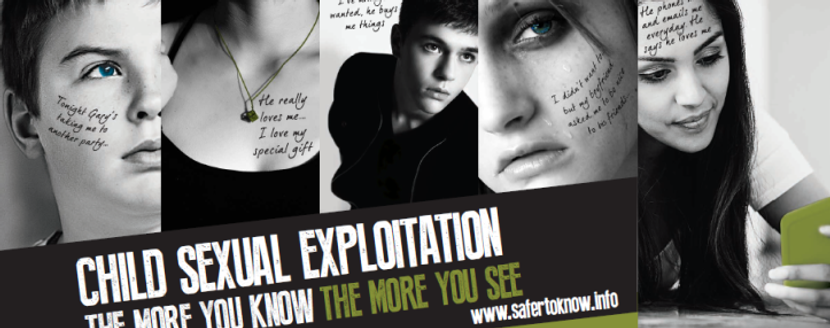Child Sexual Exploitation- Recognition is Key
When five men were jailed in Rotherham in 2010 for sexual offences against underage girls, a sequence of events unfolded that revealed the shocking extent of child sexual exploitation in the UK with an estimated 1400 children having been exploited in Rotherham alone between 1997 and 2013. The Jay report identified that in just over a third of these cases, children affected were previously known to services due to child protection and neglect and although improvements had now been made, the authorities failed to protect these children as they should.
This problem is not confined to Rotherham and similar exploitation rings have been identified across the UK. Operation Thistle, a multi agency investigation helped to uncover a South Wales sexual exploitation ring in which a legitimate model and escort agency was used to secretly groom young teenage girls and introduce them into the sex industry. Following the sentencing of those involved in 2010, a short video was created using the proceeds of crime, aimed at raising awareness of this increasing problem. It’s well worth a watch although admittedly a little disturbing: Operation Thistle Video
The government document ‘Working Together to Safeguard Children’ 2006 defines child sexual exploitation as follows:
Sexual exploitation of children and young people under 18 involves exploitative situations, contexts and relationships where young people receive ‘something’ (e.g. food, accommodation, drugs, alcohol, cigarettes, affection, gifts, money) as a result of them performing, and/or another or others performing on them, sexual activities. This can occur through the use of technology without the child’s immediate recognition e.g. internet photographs. In all cases, those exploiting the young person have power over them by virtue of their age, gender, intellect, physical strength and/or economic or other resources.
Children or young people may not always be aware they are being exploited and may believe they are in a loving consensual relationship having been subject to grooming, online or offline. Grooming is when someone builds an emotional connection with a child to gain their trust for the purposes of sexual abuse and exploitation.
So what are the risk factors? In 2011, the Child Exploitation and Online Protection Centre (CEOP) analysed the victims of child sexual exploitation and identified several themes. The majority of victims were white female, although there were recognised difficulties in identifying male and ethnic minority victims and the most common age group affected were 14-15 years olds. Children who were in care or had previously suffered abuse or neglect, were also noted to be at increased risk and there was a strong correlation between sexual exploitation and children who had gone missing on at least one occasion. Of note, the presence of a positive relationship with a protective nurturing adult was felt to be protective.
The recognition of the above has led to the creation of a risk assessment process for sexual exploitation, otherwise known as the SERAF (see here). This is a useful tool when considering whether a child is at risk of sexual exploitation. It recognises specific vulnerabilities that increase a child’s risk such as low self esteem, breakdown of family relationships and family history of mental health difficulties amongst others.
It also identifies specific risk factors for sexual exploitation including staying out late, alcohol and drug misuse and self harm. If you think about it, these problems are not uncommonly seen as a paediatrician and should at least trigger some alarm bells and further exploration of other risk factors. Other suggestive risk factors include use of a mobile phone or the internet that is causing concern and the ownership of unexplained amounts of money or expensive gifts.



The charity Barnardos has done a lot of research in relation to the above. They also identified that it is not uncommon for peers to act as perpetrators of sexual exploitation either directly or through introducing young people to abusive adults. Along with Microsoft they’ve created an education app entitled ‘Wud u?” to help educate young people about behaviours that might put them at risk of sexual exploitation.
These children often present to police services and emergency departments and increasing work is being done to help recognise and support victims. As Paediatricians it is important that we also think about sexual exploitation when at risk children present to our services. If alarm bells are ringing, there’s no harm in performing a SERAF assessment and discussing with social services. In recognising the exploitation of one child and intervening, you may be preventing the future exploitation of many and helping them to access the vital support that they need.
Further Reading
-
Child Exploitation and Online Protection Centre (CEOP) (2011) Out of mind, out of sight: breaking down the barriers to child sexual exploitation: executive summary (PDF). London: CEOP.
-
http://www.scin.org.uk/professionals/toolkits/operation-thistle/
-
http://www.anglesey.gov.uk/Journals/2013/11/08/o/m/w/SERAF-Inital-Risk-Assessment-Form.pdf
-
http://www.bbc.co.uk/news/uk-england-south-yorkshire-28934963
-
http://www.barnardos.org.uk/what_we_do/our_work/sexual_exploitation/wud-u-app


